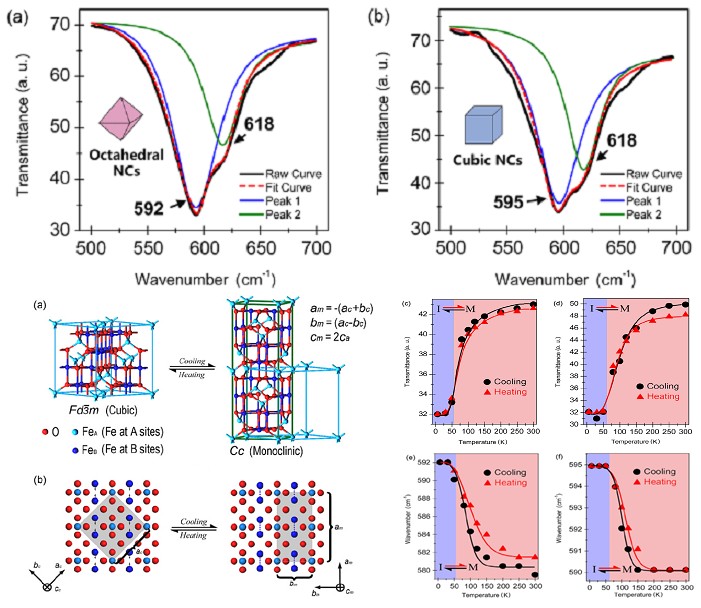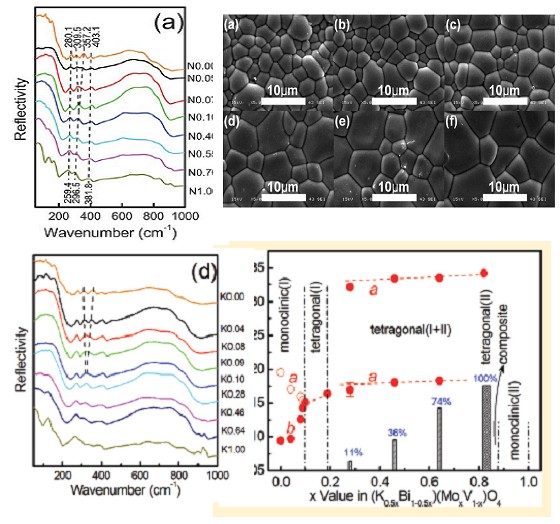Research progress at Infrared spectroscopy and microspectroscopic imaging endstation
During the last two years, the Infrared spectroscopy and microspectroscopic imaging endstation at NSRL has made significant progress. New experimental techniques such as microspectroscopy and imaging, far-infrared spectroscopy and variable temperature measurement et al. have been developed and opened to users. A series important research results on biology, life science, material science have been obtained.
Protein structure of single natural silk fibers studied by Synchrotron infrared microspectroscopy
Natural animal silks have an outstanding portfolio of mechanical properties combining high modulus, strength, and extensibility. These excellent properties are closely related to the protein structure in the silk. However, the details of how these secondary structures in natural silks are affected by factors including spinning conditions and mechanical strain and how the secondary structure helps to determine the mechanical properties of silk fibers are not completely understood. Therefore, it is very useful for deeply understanding the relationship between protein structure and mechanical properties from the single natural silk fibers.
For the scale of single natural silk( 5-20um), it is difficult to study using infrared microspectroscopy with conventional source. The brightness of Synchrotron-based infrared microspectroscopy provides strong support for the study. Utilizing NSRL infrared beamline, the researchers from Fudan University obtained high quality infrared micro-spectra of Bombyx mori, Antheraea pernyi, and Nephila edulis single silks, which can be used for semiquantitative analysis of protein secondary structures. For the first time, they determined the β-sheet content in a range of natural single silk fibers. The results give important information for the understanding the relationship between structure and mechanical properties in the single natural silks, and it is also indicates that high-resolution synchrotron infrared microspectroscopy has considerable potential for the study of single natural silk fibers. The research result has been published in Biomacromolecules (2011, 12: 3344).

The protein secondary structures of Bombyx mori, Antheraea pernyi, and Nephila edulis single silks studied by Synchrotron infrared microspectroscopy
Metal–insulator transition of magnetite (Fe3O4) nanocrystal
Metal–insulator transition is always an important research field in the condensed matter physics. The first-order metal–insulator transition in magnetite has been known for a long time but is still controversial in its nature. Especially for the Fe3O4 nanocrystal, the effect of the size, shape and terminated surface on the transition is the question which people are most concerned about. The researchers of University of science and technology of China successfully synthesized Fe3O4 nanocrystals with different sizes and shapes. Combining electrical measurement and infrared spectroscopy, they found that the size, shape and terminated surface have obvious influence on the transition. The size effect highly suppress the phase transition temperature. Significantly, by carefully comparing the infrared vibrational bands of the as-prepared Fe3O4 nanocrystals with octahedral and cubic shapes, respectively, we found that these two forms of Fe3O4 nanocrystals exhibited different transmittance changes and frequency shifts of the infrared characteristics, presumably due to the differences in the lattice distortions on the corresponding {001} and {111} terminal surfaces. This result produced evidence in support of the charge ordering of Fe atoms along the low dimensionality at octahedral B sites undergoing the Metal–insulator transition. This work was published in Nanotechnology (2011, 22: 485706).

Metal–insulator transition of magnetite (Fe3O4) nanocrystal
The dielectric property of microwave dielectric ceramics
Phonons in far-infrared region play an important role on the dielectric property of dielectric materials. It is necessary for understanding the mechanism of dielectric and improving the performance of the dielectric materials. The researchers from Xi An university successfully synthesized a series BiVO4 based scheelite solid solution ceramic by low temperature cofired ceramic (LTCC) technology. The dependence of the structure, phase transition and band gap of on the content are studied by infrared and Raman spectroscopy. This result indicates that the series BiVO4 based scheelite solid solution ceramic have excellent microwave dielectric properties. This works were published in J. Mater. Chem. (2011, 21: 18412) and Inorg. Chem. (2011, 50).

Dielectric properties of BiVO4 based scheelite solid solution ceramics
QQ截图20131115160736.jpg
Back

